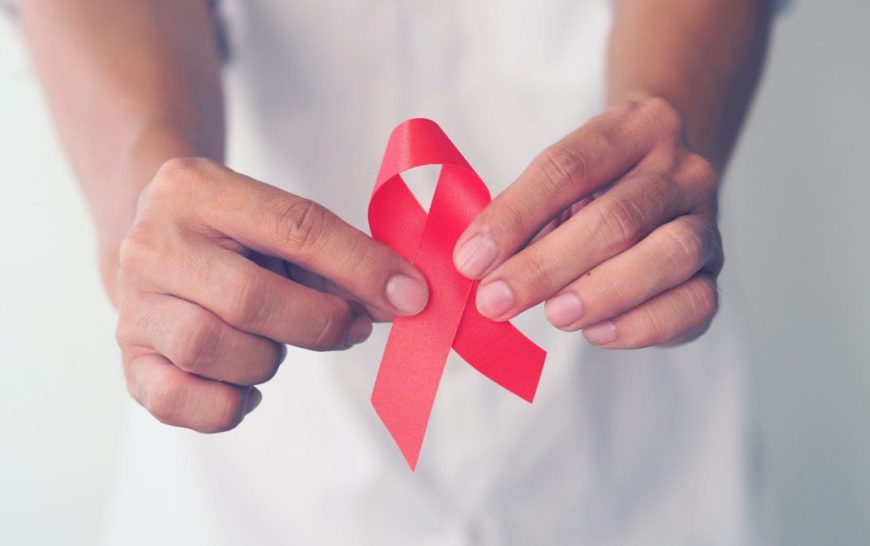
Getting a HIV diagnosis may be a far cry from the death sentence of the 80s but misinformation, unfair stigma, fear, ignorance and homophobia are still prevalent today.
In the UK, four in ten people living with the virus are diagnosed late which suggests learning the facts and raising awareness is still as relevant and necessary now as it was 40 years ago.
If there’s one thing we learned from the landmark series, It’s A Sin, it’s that there’s always room for further education and understanding and it’s always a good time to counter ignorance with knowledge.
What is HIV?
HIV stands for Human Immunodeficiency Virus and is the name of a virus that attacks cells that help the body fight infection. It is transmitted through contact with blood, semen, vaginal fluid, anal mucus and breast milk.
It cannot be passed on through skin-to-skin contact, kissing, hugging, shaking hands, coughing or sharing household items such as cups and plates.
Testing, Diagnosis & Symptoms
During the acute infection stage (the first few weeks after contracting HIV), cold-like symptoms can occur including fever, chills, headache, nausea, enlarged lymph nodes, skin rashes and sore throat. However, some people are asymptomatic and may have the virus without knowing, which is why getting tested early is essential and potentially life-saving.
The main tests for HIV are typically performed on blood or oral fluid. These include:
• Combination HIV antibody and HIV antigen test – available only as a blood test and can detect infection usually between 2-6 weeks after exposure to the virus
• HIV antibody test – this test looks for antibodies in your blood or saliva (window period 3-12 weeks after exposure)
• Point of care testing (POCT) – a rapid screening test whereby blood is taken from a finger prick and results are received straight away
You can get an HIV test from a GP, sexual health clinic, by post or a HIV testing clinic.
You can also order a self-sampling test to send off to a laboratory or self-testing kit to do at home (look out for the CE marking). If you think you’ve been exposed in the last three months, test in person instead as the self-test is not guaranteed to pick up an infection.
If you get a negative HIV test after potential exposure to the virus, get tested again after the ‘window period’ as signs of infection can take up to 12 weeks to show in the body.
If your most recent potential exposure to HIV was in the previous 72 hours speak to your care provider about Post-exposure Prophylaxis (PEP).
The stage of HIV infection and treatment can be determined by:
• A CD4 cell count which measures the number of CD4 white blood cells specifically attacked by the virus. By measuring the CD4 levels, you can see how HIV has affected the immune system and how far the virus has progressed.
• Drug resistance to look for changes that may prevent anti-retroviral drugs from working. If drug resistance is found, a new treatment may be chosen.
• Viral load – to measure the amount of virus in your blood.
Treatment
While there’s no cure for HIV, there are extremely effective treatments available to manage the virus, prevent complications and enable those living with HIV to enjoy a long and healthy life. It’s worth reiterating that people on effective HIV treatment cannot pass it on.
Antiretroviral therapy (ART) involves taking an HIV medication regimen every day to prevent the virus from multiplying, which reduces the amount of virus in the body (viral load) and allows the immune system to repair itself.
By reducing the viral load, HIV medicines also reduce the risk of transmission to others. The vast majority of people with the virus usually take up to four HIV medicines, sometimes combined into one pill, because the virus can quickly adapt and become resistant.
Once ART treatment is started it should be continued on a long-term basis to help maintain low viral load and a healthy CD4 count.
Undetectable viral load explained
Viral load is the term used to describe the amount of HIV in the blood. A viral load test can measure the number of copies of HIV in the body per millilitre of blood. HIV treatment works by reducing the amount of virus in an infected person’s blood to undetectable levels.
Once your viral load becomes ‘undetectable’ (usually within 6 months of starting treatment) it means that the level of HIV in your blood is so low that it can’t be detected by the test and you cannot pass on the virus through sexual contact. In the UK below 20 copies/ml is usually classed as undetectable.
How to reduce the risk of HIV
• Getting regularly tested for HIV if you’re sexually active
• Taking PrEP (pre-exposure prophylaxis) or PEP – these tablets can only be taken by HIV-negative people to reduce the risk of becoming infected with HIV through sex if taken either daily or around the time of exposure
• Using condoms
• Never sharing needles or other injecting equipment
• Taking your medication consistently if you’re living with HIV
Progression to AIDS / late-stage HIV
AIDS (Acquired Immune Deficiency Syndrome) is the name given to the final and most advanced stage of HIV infection. Left untreated, HIV can progress to AIDS after approximately 10-15 years but with an early diagnosis and effective antiretroviral treatment, most people with access to health care will not develop AIDS.
At this point, your immune system has been severely damaged by the virus and you’re more susceptible to opportunistic infections and cancers known as AIDS-defining illnesses.
Helpful resources:
Terrence Higgins Trust – Can’t pass it on
Terrence Higgins Trust – Living well with HIV







